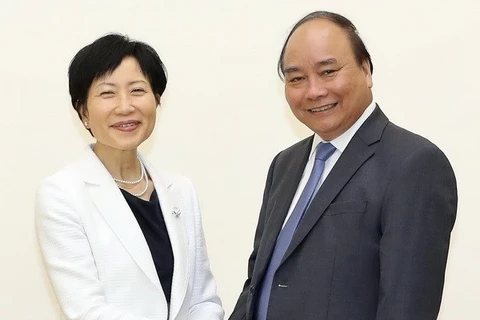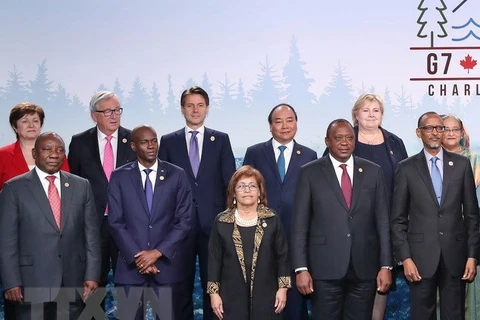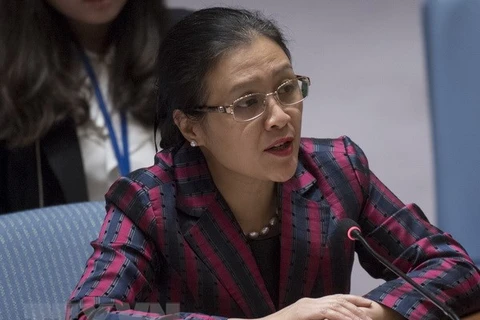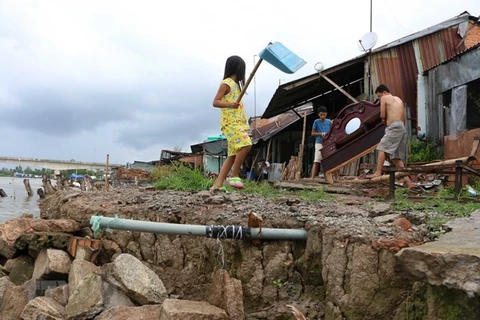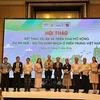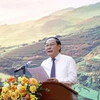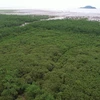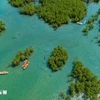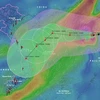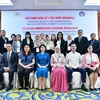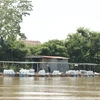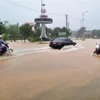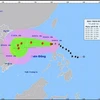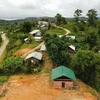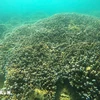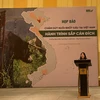Hanoi (VNA) - A series of solutions to adapting to sea level rise caused by climate change have been taken in Vietnam, as the phenomenon is posing grave challenges to the ecosystem, biodiversity and natural resources as well as human life.
Many researches have affirmed that the sea level is rising in the century with the main cause of climate change.
With over 3,260 kilometers of coastline stretching from the north to the south, and about 50 percent of the population living in lowland areas, Vietnam is considered one of the most vulnerable and being negatively impacted by sea level rise.
In 2007, the World Bank estimated that a one-meter rise in sea level could affect 10 percent of Vietnam’s population, with a GDP loss of about 10 percent; and a three-meter rise in sea level can directly impact about 25 percent of the country’s population, causing a GDP loss of 25 percent.
It can be seen that consequences of climate change and sea level rise for Vietnam are serious, including a visible risk for poverty reduction targets, and negative impacts on the realization of millennium and sustainable development goals.
As the country cannot avoid sea level rise impacts, scientists have selected adaptation solutions to the problem, focusing on physical interventions; technical solutions for infrastructure construction such as sea dykes, embankments, dams to prevent salty water, or canals to control flood.
Ecosystem-based adaptation measures, such as strengthening the planting of coastal protection forests and mangroves, and increasing investments in wetlands and replenishment of land for beaches are applied.
Improving infrastructure facilities and changing farming habits are other solutions. These are made through adjusting management policies and changing standards related to construction, land use and environmental protection, towards minimizing vulnerability and increasing adaptability of the community in the context of climate change and sea level rise.
The last solution to the issue is resettlement and displacement of houses and infrastructure facilities out of areas with high risks of submergence.
Experts said that impacts caused by sea level rise should be considered as an important indicator for the process of policymaking, thus strengthening the adaptability of each locality and the country in general amidst the increasingly complicated climate change and sea level rise. -VNA
Many researches have affirmed that the sea level is rising in the century with the main cause of climate change.
With over 3,260 kilometers of coastline stretching from the north to the south, and about 50 percent of the population living in lowland areas, Vietnam is considered one of the most vulnerable and being negatively impacted by sea level rise.
In 2007, the World Bank estimated that a one-meter rise in sea level could affect 10 percent of Vietnam’s population, with a GDP loss of about 10 percent; and a three-meter rise in sea level can directly impact about 25 percent of the country’s population, causing a GDP loss of 25 percent.
It can be seen that consequences of climate change and sea level rise for Vietnam are serious, including a visible risk for poverty reduction targets, and negative impacts on the realization of millennium and sustainable development goals.
As the country cannot avoid sea level rise impacts, scientists have selected adaptation solutions to the problem, focusing on physical interventions; technical solutions for infrastructure construction such as sea dykes, embankments, dams to prevent salty water, or canals to control flood.
Ecosystem-based adaptation measures, such as strengthening the planting of coastal protection forests and mangroves, and increasing investments in wetlands and replenishment of land for beaches are applied.
Improving infrastructure facilities and changing farming habits are other solutions. These are made through adjusting management policies and changing standards related to construction, land use and environmental protection, towards minimizing vulnerability and increasing adaptability of the community in the context of climate change and sea level rise.
The last solution to the issue is resettlement and displacement of houses and infrastructure facilities out of areas with high risks of submergence.
Experts said that impacts caused by sea level rise should be considered as an important indicator for the process of policymaking, thus strengthening the adaptability of each locality and the country in general amidst the increasingly complicated climate change and sea level rise. -VNA
VNA

